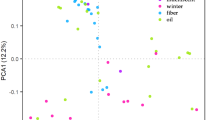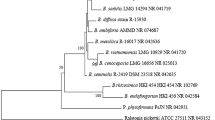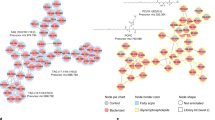Abstract
IN the course of the examination of large numbers of samples of flax seed by the Ulster method1 for the presence of seed-borne parasites, many were found to be contaminated with Botrytis cinerea. As in some of the samples more than 25 per cent of contaminated seeds was recorded, the pathogenicity of the isolate from home-saved seed was investigated, since B. cinerea is known to cause grey mould of flax.
This is a preview of subscription content, access via your institution
Access options
Subscribe to this journal
Receive 51 print issues and online access
$199.00 per year
only $3.90 per issue
Buy this article
- Purchase on SpringerLink
- Instant access to full article PDF
Prices may be subject to local taxes which are calculated during checkout
Similar content being viewed by others
References
Muskett, A. E., and Malone, J. P., Ann. Appl. Biol., 28, 8 (1941).
Van Poeteren, H., Versl. en Meded. Plantenziektenkundigen Dienst te Wageningen, 44, 60 (1926).
Muskett, A. E., and Colhoun, J., Ann. Appl. Biol., 30, 7 (1943).
Muskett, A. E., and Colhoun, J., Ann. Bot., N.S. 6, 219 (1942).
Author information
Authors and Affiliations
Rights and permissions
About this article
Cite this article
COLHOUN, J. Grey Mould (Botrytis cinerea) cf Flax. Nature 153, 25–26 (1944). https://doi.org/10.1038/153025b0
Issue date:
DOI: https://doi.org/10.1038/153025b0
This article is cited by
-
Infectie van lijnzaad metBotrytis waardering en bestrijding
Tijdschrift Over Plantenziekten (1958)



